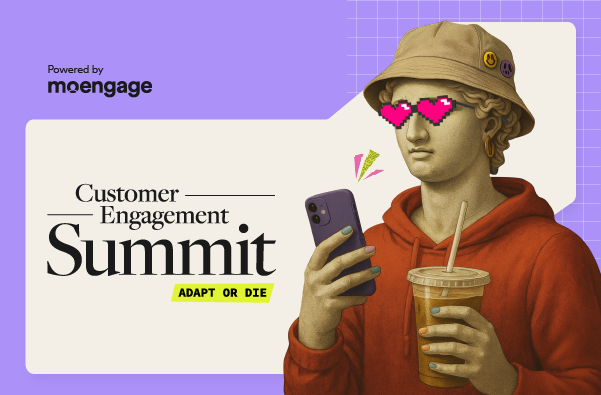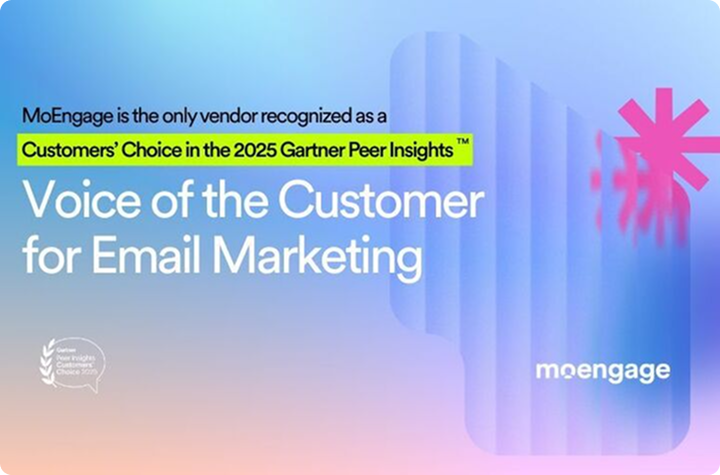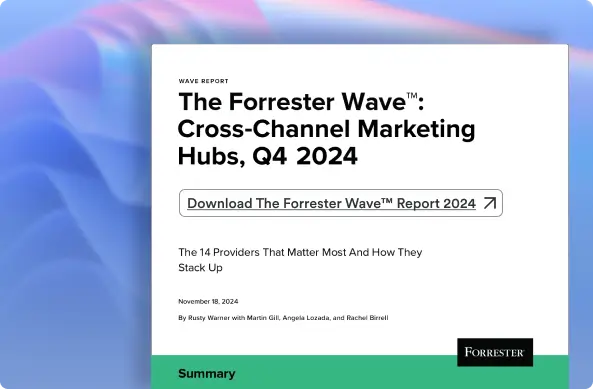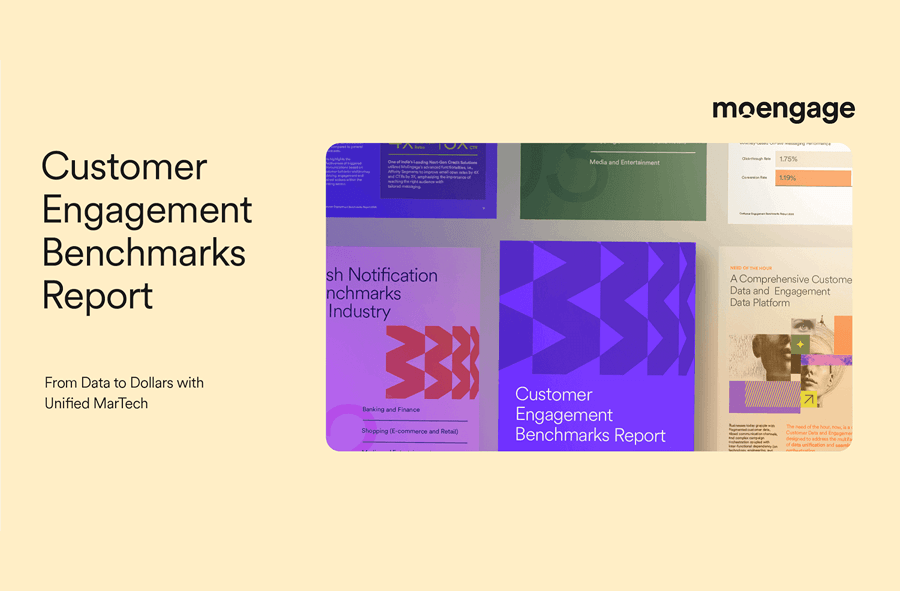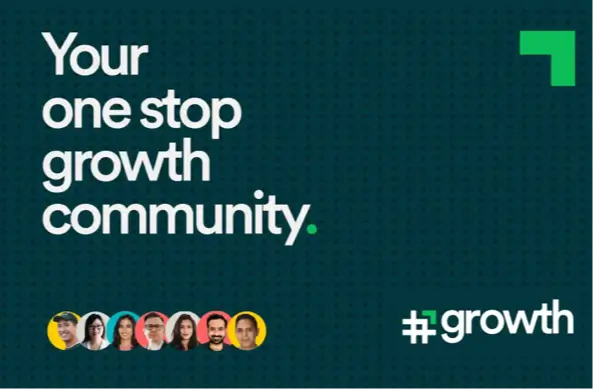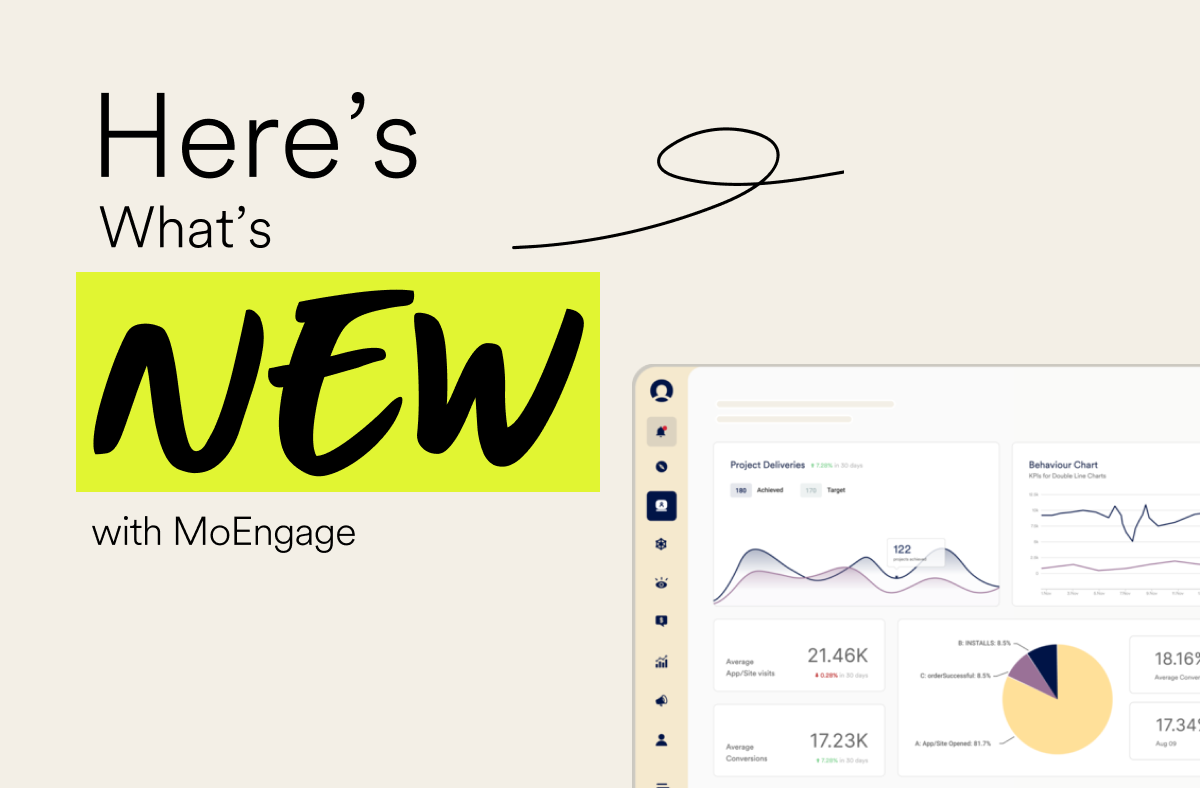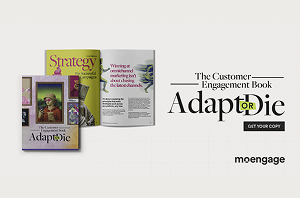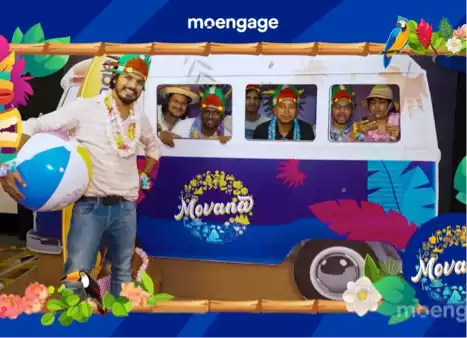10 Re-Engagement Email Examples to Win Back Customers
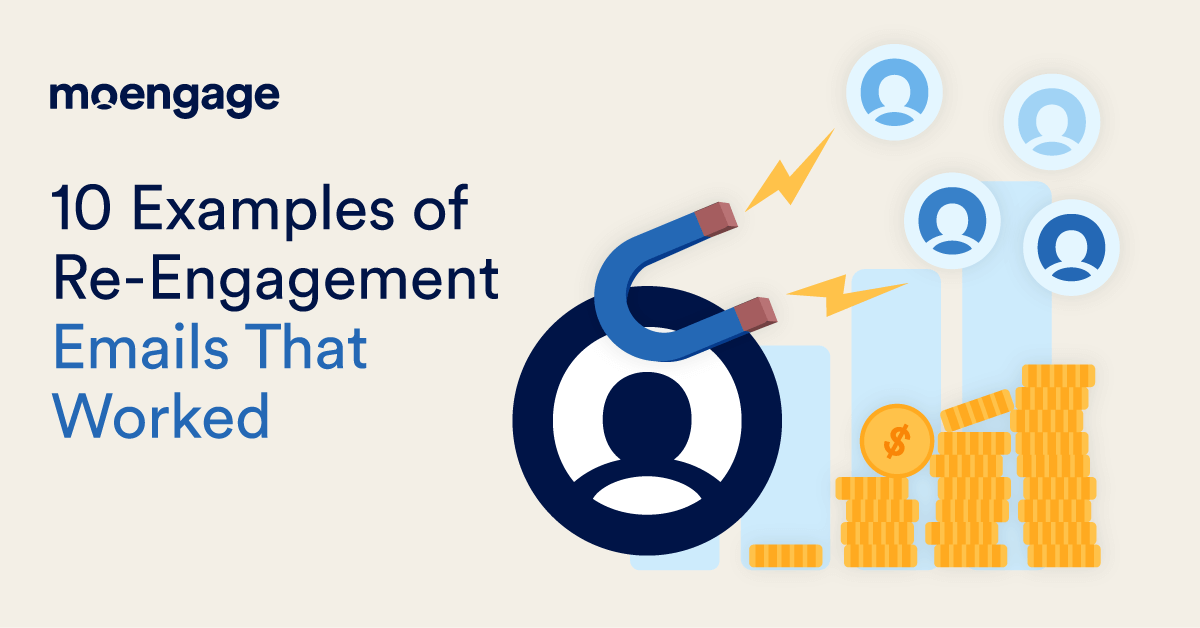
Reading Time: 12 minutes
Sometimes, email list subscribers go dark.
It could happen for a number of reasons, including receiving too many emails, no longer being interested in the content, or forgetting why they signed up in the first place. But here’s the deal: just because someone goes quiet, it doesn’t mean they’re gone forever.
The trick is to win them back with carefully considered re-engagement emails. As a marketer, you have access to a lot of data that can be used to craft personalized messages that stand out in your subscribers’ inboxes can send a run-of-the-mill follow-up email. Or, you can take it a step further with re-engagement emails.
Incorporating small, thoughtful touches, such as using their name, referencing their past order, informing them about the availability of a new line, or even offering a discount on their most frequently purchased item, can make a significant difference.
In this article, we’ll dig into what makes a re-engagement email campaign successful and share examples from leading B2C brands who have used this tactic to re-ignite their customers.
What are Re-Engagement Emails?
Re-engagement emails are targeted emails sent to inactive subscribers to recapture their interest, encourage engagement, and boost retention. They aim to reconnect with customers by reminding them of positive past experiences with your brand, ultimately rebuilding their trust and showing them your value.
A good way to do this is by sharing social proof, offering a discount, and keeping the customer updated about a new product, but never resorting to a hard sell. The idea behind re-engagement emails is to tell them, ‘We miss you’, but not ‘Buy now’.
9 Benefits of Sending Re-Engagement Emails
Re-engagement emails enable you to revive a dormant customer base and enhance retention.
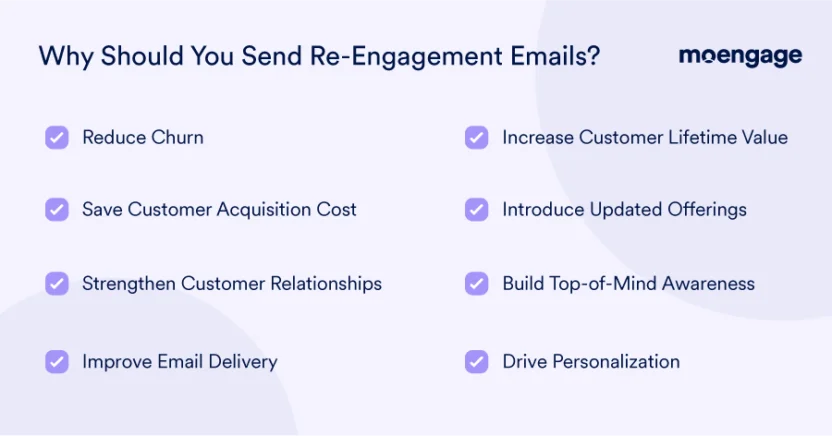
Let’s explore the benefits of sending these emails in detail.
- Reduce Churn: Re-engagement emails can help you proactively retain customers before they are lost entirely. How? By giving them a timely, gentle nudge.
- Increase Customer Lifetime Value: Re-engagement emails present a significant opportunity to leverage customer data, thereby increasing the likelihood of engagement and conversion. They’re a low-effort, high-impact tool that provides a cost-effective opportunity to upsell, cross-sell, or simply bring customers back into the product experience.
- Save Acquisition Cost: Brands have a 60% higher chance of selling to an existing customer than to a new one, thereby reducing their Customer Acquisition Cost (CAC). With re-engagement emails, you can strengthen customer relationships and maximize your ROI from existing customers.
- Introduce Updated Offerings: What if your customers churned because your product wasn’t mature enough for them? Could you possibly retarget them with a better offering? A second chance to show off new features and fixes? Re-engagement emails, among other things, also allow you to say, “Hey, we listened and improved” with poise.
- Strengthen Customer Relationships: It’s not just about transactions; it’s about building connections. These emails enable you to demonstrate care, foster empathy, and stay connected beyond the sale.
- Build Top-of-Mind Awareness: As they say, out of sight is out of mind, and more often than not, re-engagement emails are one of the most innovative ways to stay in sight. They ensure your brand doesn’t fade into the background when others make the noise. By showing up with timely, relevant, and non-pushy content, you can remind lapsed customers why they initially chose you.
- Improve Email Delivery: When you reconnect with your disengaged customers, you also have the opportunity to clean and refine your email list and assess the health of your email addresses. It saves you cost, and ensures that removing unresponsive subscribers improves your sender reputation and email deliverability.
- Drive Personalization: It’s 2025, and where would a brand be without personalization? Brands that use personalized emails can achieve conversion rates between 2.8x and 300.7x compared to non-personalized emails.
What gets opened? What CTA works? Can you leverage past purchase history data? What brings customers back? Use these questions and more to fuel your email personalization engine, segment smarter, and trigger behavior-based automations.
Now that we’ve unpacked the benefits of re-engagement emails and why they matter, let’s look at how you can implement them.
Common Types of Re-Engagement Emails
There’s hardly a one-size-fits-all when it comes to winning your customers back via re-engagement emails. But here are the most common and proven formats that brands rely on:
1. The “We Miss You” Email
A ‘We Miss You’ email is a personalized reactivation message designed to reconnect with customers who haven’t interacted with the brand in a while, reminding them of their past interest and experience with the brand.
Why they matter: A simple, heartfelt “we miss you” message for customers who haven’t interacted is usually seen as genuine. However, nearly every other brand now uses it, so don’t forget to be playful.
Reactivation emails, such as “come back” or “we miss you,” signal interest without being pushy, and should be part of your re-engagement email strategy. They’re targeted at customers who have gone cold but still have intent or curiosity.
2. The Incentive Email
An incentive email uses a promotional offer, such as a discount, free shipping, or a loyalty reward, as a hook to bring back the customer and drive immediate engagement. The idea is to lower the friction between the customer and their purchase journey by offering an incentive.
Why they matter: Offers like “20% off your next order” or “Free shipping” will drive engagement, even if they don’t drive sales. They bring customers back, of all kinds — new, curious, and dormant — as a quick motivation to check the products they are interested in.
Furthermore, using customer milestones, such as birthdays or anniversaries, drives email engagement at a deeper level, prompting a reduction in friction in the buying process on a day that is relevant to them. It also makes customers feel like savvy shoppers, excited to earn the rewards for something they’ve earned through their relationship with the brand.
3. The Product Update Email
A product update email informs customers of new features, improvements, or changes in the product or service. These kinds of emails are beneficial to show ongoing value and progress in the product.
Why they matter: This type of email is most effective for B2C SaaS or app-driven businesses, where emails highlight new features or an improved version for customers who last engaged with the product.
These emails demonstrate a brand’s understanding of its customers. They tell your audience that you know what they like and consume, and you’ve taken the time to let them know you’ve added something useful for them.
4. The Feedback Request Email
A feedback request email is a great value driver, used to solicit customers’ opinions or experiences with your product, helping brands gather valuable insights while also increasing user engagement.
Why they matter: Sometimes, asking your customers what’s going right or wrong helps more than you think. You get valuable feedback, and customers feel heard.
These emails demonstrate that you’re willing to get to know the customer, and customers expect you to offer hyper-relevant value based on their feedback.
5. The Countdown Email
A countdown email is used to create a sense of urgency by highlighting a limited-time offer, deadline, or value. It is primarily used to motivate customers to take quick action before the time runs out.
Why they matter: Emails that generate a sense of urgency prompt customers to take immediate action. They nurture the ever-present desire to buy by telling customers they have a limited period to make up their minds, in exchange for better benefits.
These emails serve as a perfect reminder of customers’ initial interest, create FOMO, and nudge them over the line with a discount.
Real-Life Re-Engagement Email Examples to Learn From
1. Spotify | Vertical Product Discovery Email
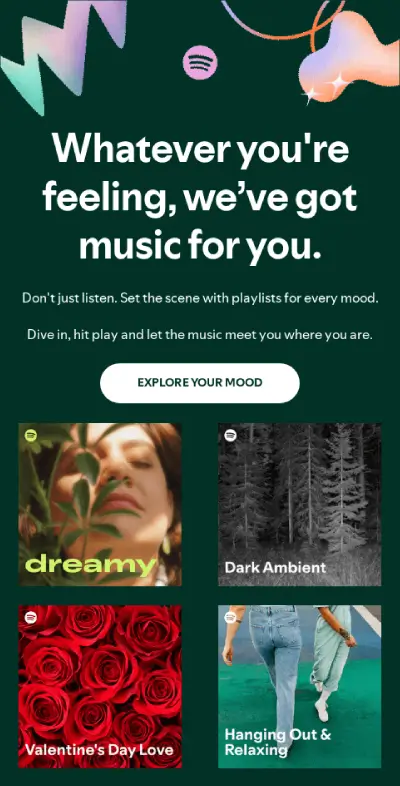
Source: https://reallygoodemails.com/emails/your-mood-deserves-its-own-soundtrack
Campaign goal: Make music discovery effortless and tailored, driving re-engagement.
This re-engagement email from Spotify sends a personalized nudge to get its listeners back on the app. This is possible because the brand already knows the users’ listening history and makes artist recommendations based on it, in a scrollable, mobile-friendly format.
How this email re-engaged customers so well: The email is effective because it taps into our mood, memory, and music habits. By serving up familiar vibes with fresh suggestions, it sparks curiosity. The vertical, story-like layout keeps customers scrolling, while clear CTAs, such as “Explore your mood,” make jumping back into the app seamless.
2. Cowboy | Sharing Company Updates
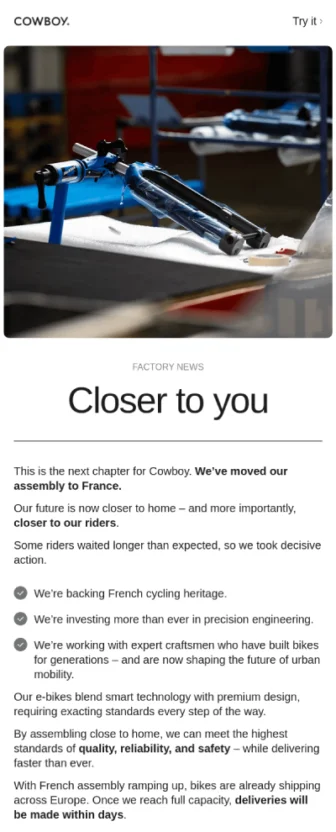
Source: https://reallygoodemails.com/emails/designed-in-belgium
Campaign goal: Stay top-of-mind with customers and softly introduce product pre-orders.
Cowboy, the connected electric bike brand, sent an update email announcing their move to a new HQ in France. On the surface, it’s a simple company update, but it’s designed to do more. By tying their move to a broader narrative of the cycling culture and their mission to empower urban riders, the email builds emotional connection and brand affinity. It also subtly mentions pre-orders, acting as a soft launch without a hard sell.
How this email re-engaged customers so well: Even without a flashy offer or discount, this email keeps the brand relevant. It humanizes Cowboy by sharing its journey, values, and presence in a new market. The soft mention of pre-orders creates curiosity without pressure, making it feel more like being part of something than being sold to. It’s a clever mix of storytelling and subtle conversion.
3. Starbucks | Product Reminders
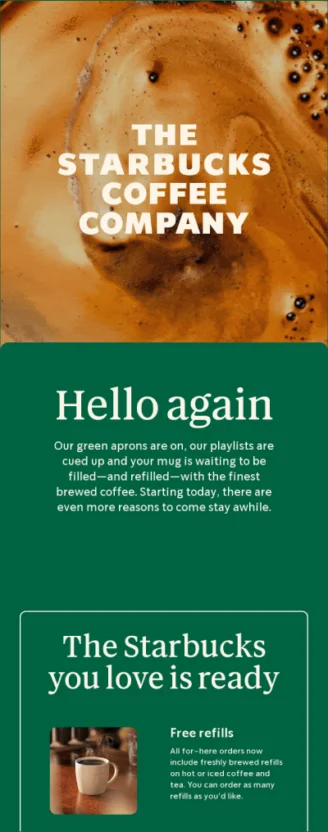
Source: https://reallygoodemails.com/emails/the-starbucks-you-love-is-ready
Campaign goal: Win back customer attention and reinforce seasonal offerings.
Starbucks sent out a reminder email highlighting what’s new in-store, ranging from menu updates to perks like free refills and access to the condiment bar. It’s not pushing a major promotion or product drop, just a gentle nudge to get customers back in the loop and the store.
How this email re-engaged customers so effectively: Most customers require frequent reminders, and Starbucks is aware of this. This email serves as a gentle reminder, leveraging familiarity and small incentives to re-engage lapsed attention. By spotlighting the little things, such as freebies, it reactivates interest without being pushy. Simple, timely, and effective.
4. Bubble | Sharing Social Proof
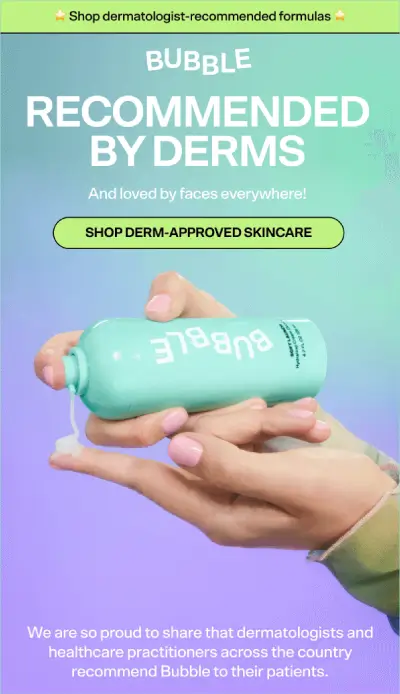
Source: https://reallygoodemails.com/emails/derms-know-best
Campaign goal: Build trust through social proof and drive conversions.
Bubble, a skincare brand rooted in transparency and community, sent an email featuring dermatologist-recommended products alongside real customer testimonials. The email is clean and straightforward, showcasing short quotes about their skincare wins. It taps into what skincare buyers crave: reassurance, results, and relatable stories.
How this email re-engaged customers so well: When it comes to skincare, trust is everything. By combining expert endorsements with real customer experiences, Bubble bridges the gap between curiosity and conversion. The visuals and quotes humanize the brand, making it feel authentic and compelling. It’s an innovative, no-fluff format that builds credibility while nudging customers to try what’s already working for others.
5. Duolingo | A Simple Follow-Up on Usage
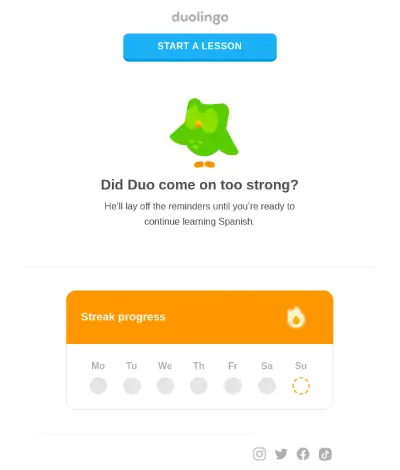
Source: https://reallygoodemails.com/emails/these-reminders-dont-seem-to-be-working
Campaign goal: Re-engage inactive customers through humor and personalization.
After a series of standard reminders failed to bring customers back, Duolingo sent a follow-up email with the subject line: “These reminders don’t seem to be working.” It includes the customer’s learning streak status and a playful nudge that mirrors the brand’s witty, self-aware tone.
How this email re-engaged customers so well: The email feels like a continuation of Duo’s sassy personality, which customers have come to expect across channels. That consistency builds trust and keeps the brand memorable, even when customers are not actively engaged.
6. Marvel | New Release
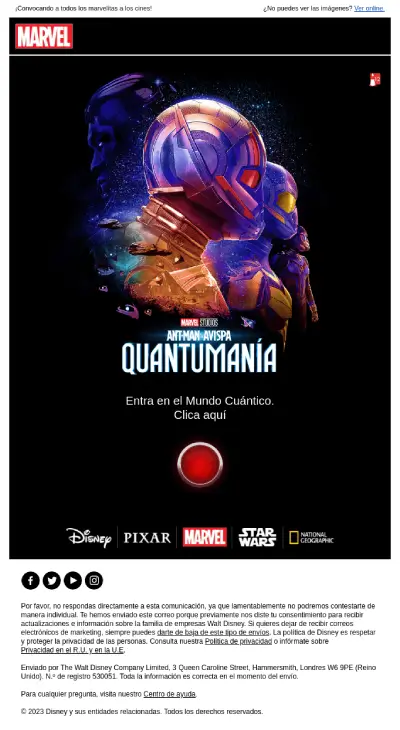
Source: https://reallygoodemails.com/emails/ant-man-and-the-wasp-quantumania-now-in-theatres
Campaign goal: Drive excitement and engagement
Marvel sent a no-frills email announcing a new movie release; a crisp, straight-to-the-point update that something new is here. For a brand with a massive loyal fan base, that’s all it takes—the email banks on anticipation and the power of a well-loved cinematic universe.
How this email re-engaged customers so well: When your audience is deeply invested, information is the offer. Marvel didn’t need to dress it up; just letting fans know what’s dropping was enough to spark clicks and conversations. The simplicity adds to the impact, making it feel like an exclusive heads-up rather than a marketing push.
7. Grammarly | Adding Personalization
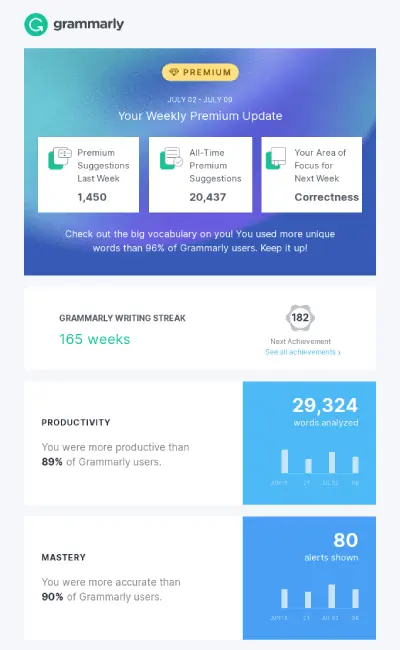
Source: https://reallygoodemails.com/emails/you-used-numerous-new-words-last-week
Campaign goal: Use personalization to build a long-term connection.
Grammarly sends a data-backed email to customers highlighting their progress, including the number of words written, productivity levels, and language mastery. It’s not about selling a feature or pushing an upgrade; it’s about showing customers how far they’ve come with the product. A subtle way to remind them of the value they’re getting.
How this email re-engaged customers so well: It taps into a powerful emotion — the desire for personal growth. By turning usage stats into a feel-good reflection moment, Grammarly strengthens customer attachment. This kind of personalized recap helps the brand stay relevant even when customers aren’t actively thinking about it, which is significant when it’s time to renew or upgrade their Grammarly plan.
8. Headspace | Free Trial for Hesitant Customers
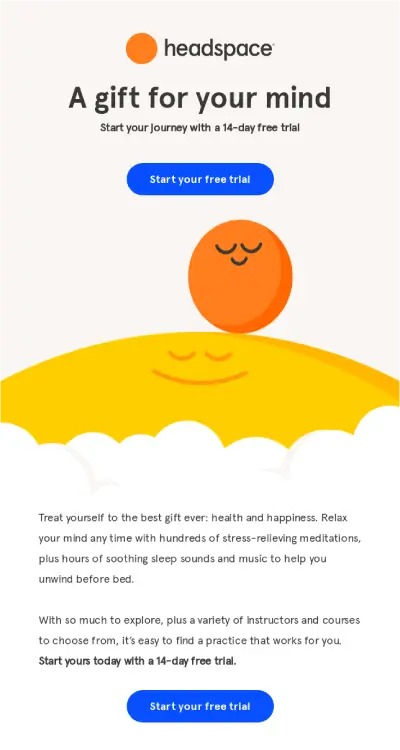
Source: https://reallygoodemails.com/emails/start-your-journey-with-14-days-free
Campaign goal: Nudge hesitant customers with a low-friction entry point
Headspace sends a 14-day free trial email to customers who’ve shown interest but haven’t converted. The copy is simple, straightforward, and benefit-led, mirroring the brand’s calm, clutter-free aesthetic. No hard sell, just a gentle invitation to try mindfulness on their terms.
How this email re-engaged customers so well: It removes the pressure and makes the decision to come back feel easy. For customers on the fence, a free trial backed by clean design and clear value is the perfect push. The campaign reflects the product experience itself: calm, helpful, and low-effort. A well-aligned move that invites action without noise.
9. McDonald’s | Reward Points Too Hard to Resist
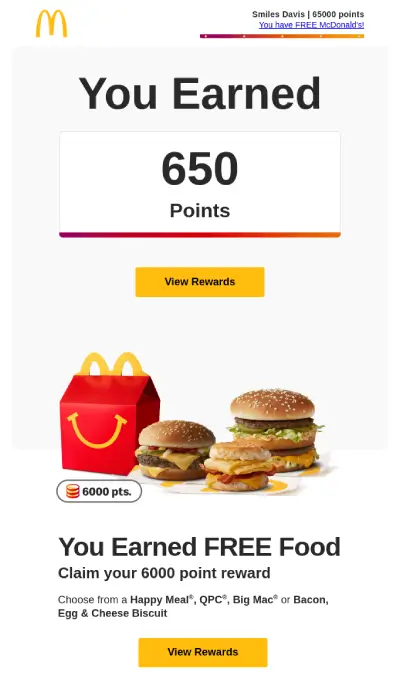
Source: https://reallygoodemails.com/emails/you-earned-329-points-toward-free-food
Campaign goal: Drive conversions through a clear, no-fluff discount offer.
McDonald’s would categorize its customers as loyal, frequent, occasional, or accidental. They would know how many meals a potential occasional eater would turn into a frequent, and further, a loyalist.
So, a clear offer promoting customers’ earned free food and points, ‘a potential perceived reward or exclusive benefit’ is an excellent means to bring anyone back. Without overwhelming the reader, McDonald’s subtly highlights the value in the offer.
How this email re-engaged customers so well: Clarity sells. McDonald’s avoids gimmicks and unnecessary build-up, focusing instead on delivering value instantly. The design is minimal, the message is focused, and the call to action is unmissable. It respects the reader’s time while still nudging them toward the sale.
10. The Streamable | Offering Exclusive Perks
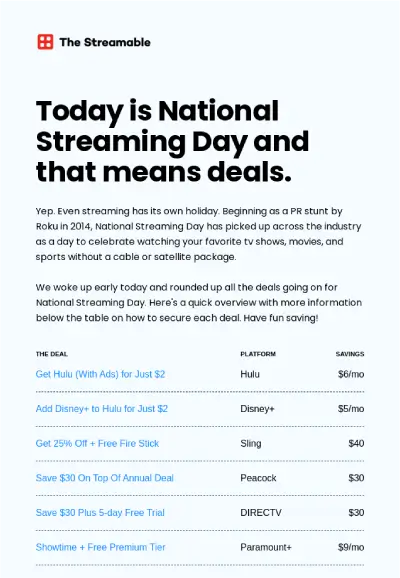
Source: https://reallygoodemails.com/emails/these-are-all-the-deals-for-national-streaming-day
Campaign goal: Boost engagement and build trust by offering value
For National Streaming Day, Streamable sends an email highlighting the best streaming deals from top platforms, including Netflix, Hulu, and Disney+. The email provides a detailed overview of every offer, explaining how customers can claim them. It’s thoughtful, well-timed, and surprisingly generous coming from a brand that isn’t the one offering the discounts.
How this email re-engaged customers so well: It flips the script. By spotlighting others, Streamable earns trust and positions itself as a helpful insider rather than a hard seller. It’s a smart hijack of a topical moment, wrapped in a utility-first format.
How to Create Enticing Re-Engagement Emails That Customers Love
With the above examples, are you convinced now that re-engagement emails are a powerful strategy to encourage disengaged customers to take action? Good. Here’s how you can nail them to a T:
1. Personalize Emails
Personalized emails see a 26% increase in open rates, making it a priority in email marketing. We recommend going deeper than just the first name and tailoring content based on behavior, actions, purchase history, preferences, and other relevant factors.
When customers feel that the email is directly addressing them, they are more likely to click, explore, and make a purchase.
2. A/B Testing
From your subject line to the image in your email, everything must be A/B tested for the best outcome. Brands can use predictive analysis to craft email variations that are likely to perform well; they can also explore content optimization through suggested improvements, optimizing for factors such as time, subject lines, CTAs, and more.
3. Make Them Responsive
Because customers view content on multiple devices—smartphones, laptops, and tablets—it’s essential that your content adapts accordingly. With 59% of millennials using their cellphones to check emails, optimizing for mobile is crucial. Be consistent across devices for a better experience and a stronger brand image.
4. Explore Automation
Email automation enables you to reach customers when they are most receptive, thereby circumventing delays, unnecessary repetition, and monotony. Constantly refine your email automation strategy across the customer lifecycle, particularly during win-back campaigns.
5. AI Integration
AI-driven email marketing yields a 13% increase in click-through rates and a 41% rise in revenue, demonstrating the transformative impact of AI on campaign performance.
Today, brands are utilizing AI to achieve hyper-personalization at scale, build predictive segments with a likelihood of action, generate dynamic content, and predict customer actions such as engagement or churn. Utilizing it is one of the email marketing best practices to enhance your email marketing and make it more authentic and on-brand.
Use MoEngage to Win Back Customers with Re-Engagement Emails
Re-engagement emails aren’t just a last-ditch effort; they’re where your journey of direct communication with the customer begins. With the right strategy and tools, you can deliver personalized, timely emails that turn silence into clicks and conversions.
MoEngage’s all-in-one email platform helps automate, personalize, and optimize re-engagement emails across the customer lifecycle. Ready to see it in action? Try our demo today.


